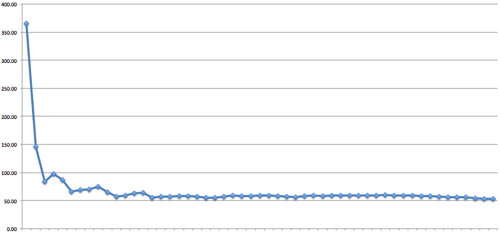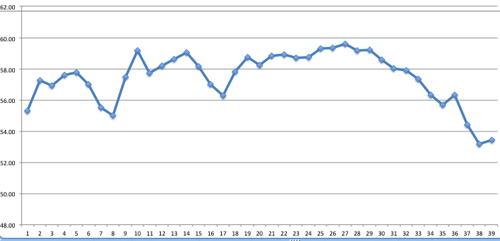I decided, late in 2012, that it might be interesting or fun to track what I read in a year. I did this partly because I knew doing it “in public” like this would drive me to read more books — I had, in years past, let my novel consumption falter while I read more from the net and from periodicals or whatever — and partly because I knew I’d find it rewarding and memorable to take the time to write at least a little about each book as I finished it.
The goal I set was 50, and I made it with 53. In books, at least, I am apparently good at budgeting and forecasting.
What I didn’t realize was how often I’d find myself game-ifying the process and sort of “juking the stats” by avoiding bigger books in favor of slimmer works in order to keep my rate up. Partway through the year I added a column to the spreadsheet (because of course there’s a spreadsheet) that tracked whether my read rate was increasing or decreasing; obviously, I wanted that to show a positive rate, not a negative one.
The curve over the year, expressed in “projected books per year at current rate”, looks like this:

Obviously, it starts high and then settles down. The real story is that for all my chatter about juking it up with Reacher books or whatever, the actual rate variance after the first quarter is relatively stable, as you can see.
Part of that is compression based on the graph, but if we skip the books finished in January through March, it looks like this:

Pursuit of the goal had me shove aside some books I really want to read, though, like Eric Schlosser’s Command and Control and the ever-popular House of Leaves, both of which languish on my to-read shelf.
So for 2014, there is no goal. Or, rather, there IS a goal: read the books I want to read, and keep writing about them. Which I think is probably one I can easily meet.
